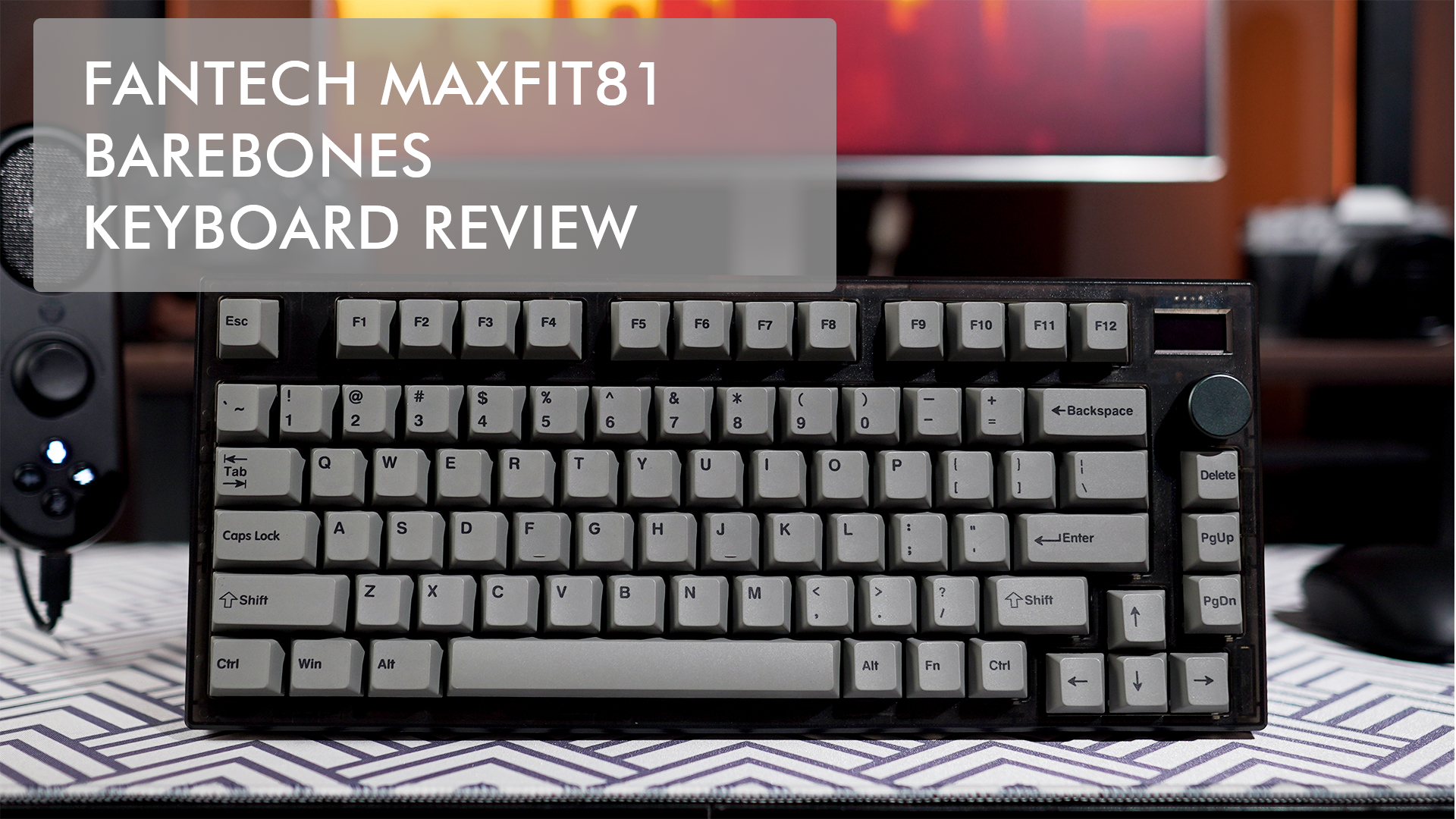
Fantech is an Indonesian PC peripherals company and now I’ll be reviewing their MAXFIT81 FROST Wireless Gaming Keyboard – Barebones version. This review aims to check how friendly the MAXFIT81 is for DIY builders, its build quality and if it warrants its selling price as a barebones keyboard kit.
Table of Contents
Fantech MAXFIT81 Product and Packaging
The MAXFIT81 comes in a flip top box and has the following accessories included:
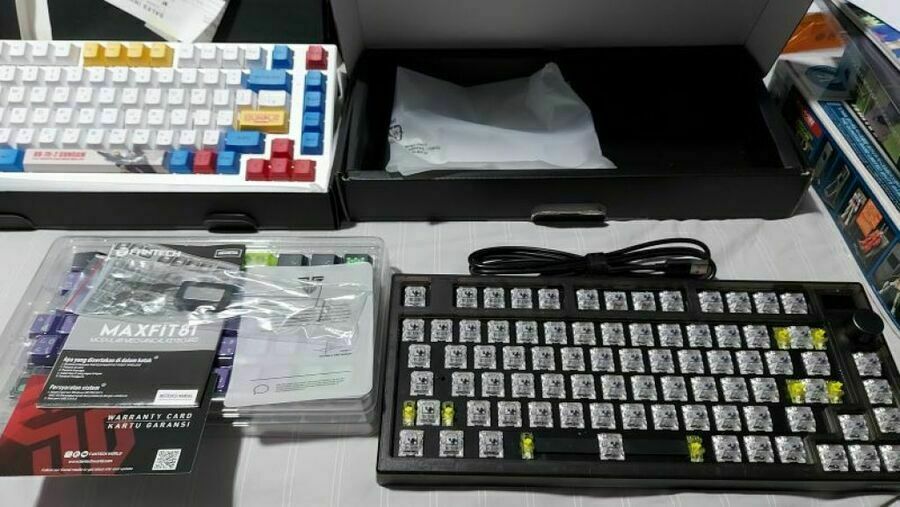
- 75 key layout barebones keyboard with LCD
- 2.4GHz RF Dongle
- Keycap puller
- Switch puller
- USB Type A to Type C Cable
- Manual
As mentioned, this is a barebones keyboard hence no switches are included when bought. The MAXFIT81 has everything assembled but without the switches. For this review, I’m using Kailh Speed Silver Switches for a profile similar to Cherry MX Speed Silver design that balances gaming and noise performance.
The MAXFIT81 FROST that I have for review is the black barebones kit. The top and bottom cover has a black semi-transparent finish, hence the FROST naming convention. An OLED display, as Fantech markets it, is found at the top right corner, just above the volume control knob.
MAXFIT81 FROST Wireless Build Quality and Useability
The entire MAXFIT81 FROST’s body is made up of a semitransparent plastic shell, black for this model, while the other comes in transparent white color. There’s some slight flex but overall is made rigid thanks to the gasket mount design that uses the sandwiched PCB, foam padding, and solid plate to provide rigidity.

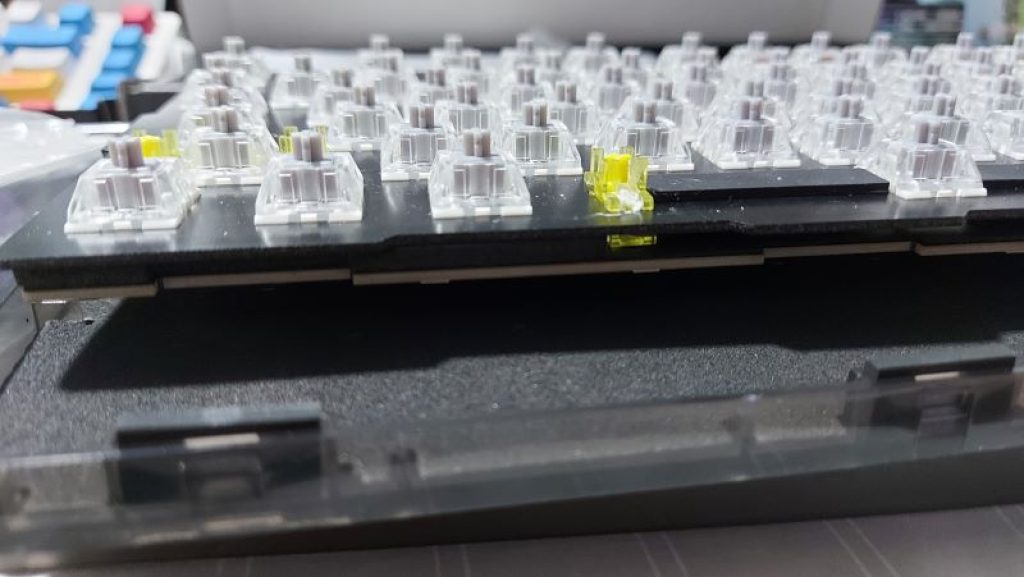
Of course, being a barebones keyboard, it lacks the keycaps and switches. It does include stabilizers that fit into the plate (users can also buy and install other stabilizers that mount directly to the PCB), and the two components are left up to us to buy are the keycaps, and switches. For this build/test setup, I’ll be using Speed Silver Kailh switches (GMK branded) and Evangelion Themed PBT keys, since I wasn’t able to buy the limited-edition ROG EVA keyboard, so why don’t we make one instead?
Installing the switches is pretty much straight forward affair, and they all fit in nicely to the PCB sandwich. There is however, a deviation with two of the topmost function key switch installation. The keyboard design had the USB Type C port raised quite high on the keyboard’s chassis; thus they (Fantech) inverted the LED and switch orientation to possibly avoid circuit board pathway interference. The RGB light may be affected a bit because of this design, but only for the two topmost keys. And on the key assignment setup, as it’s a barebones keyboard, the right most function keys may pose a challenge if you’re new to building keyboards from scratch. You can always refer to the manual or their website as there’s a sample keyboard key assignment there, if you’re new to building from scratch.
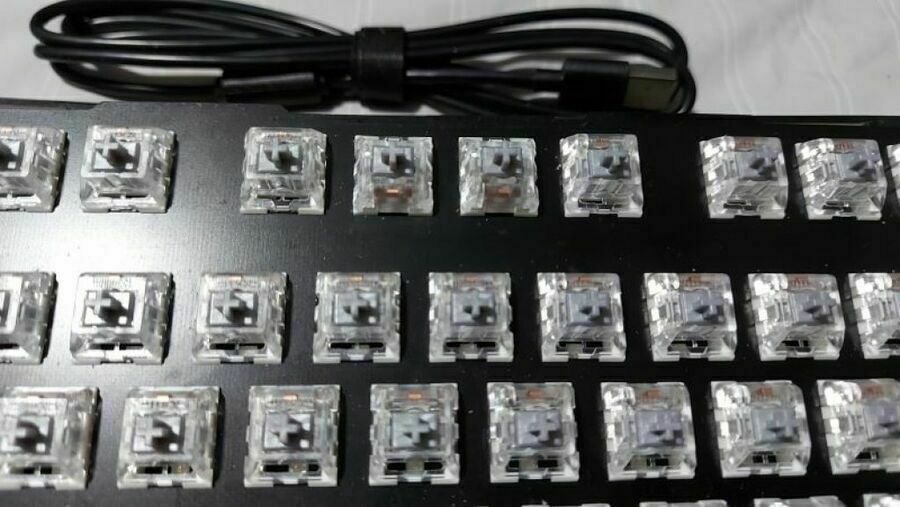
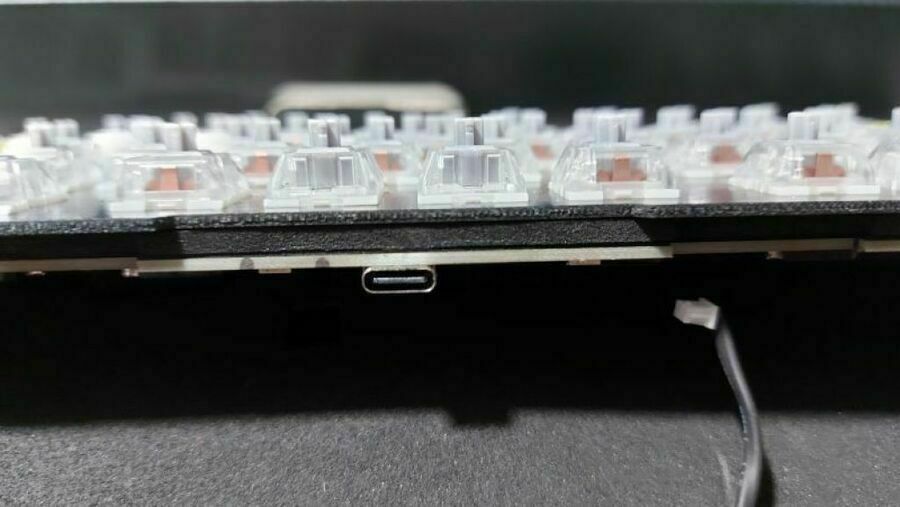
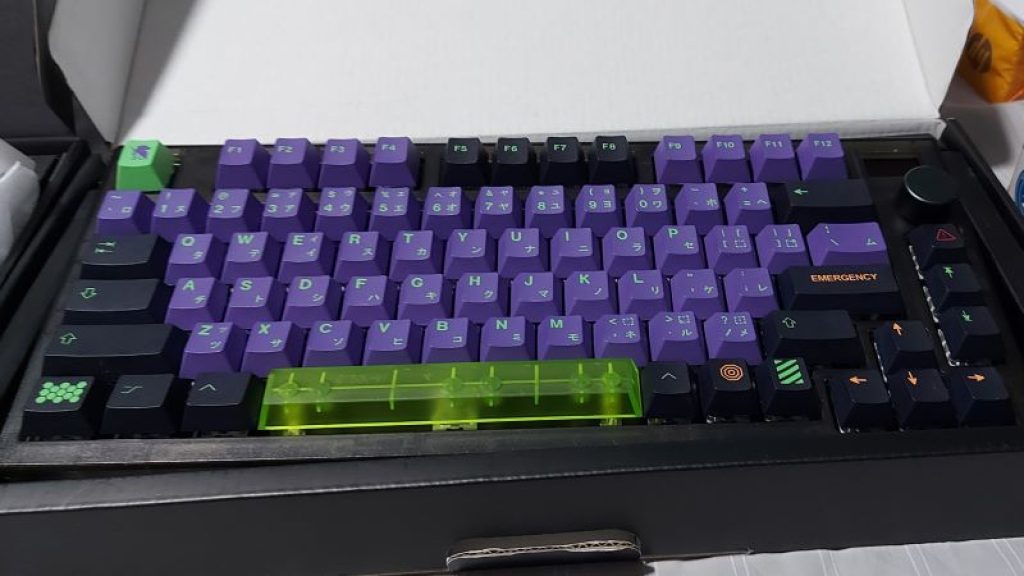
There’s a 1″ OLED display, though it’s very much a simple LCD display with blue lighting based on my observations. It can display the basic status like volume, caps lock indicator, and time/date. It can display GIF images as well, but given the lower resolution and definition of the screen, having a detailed gif image may look bad when used. Using simpler design gif images is definitely the way to go.

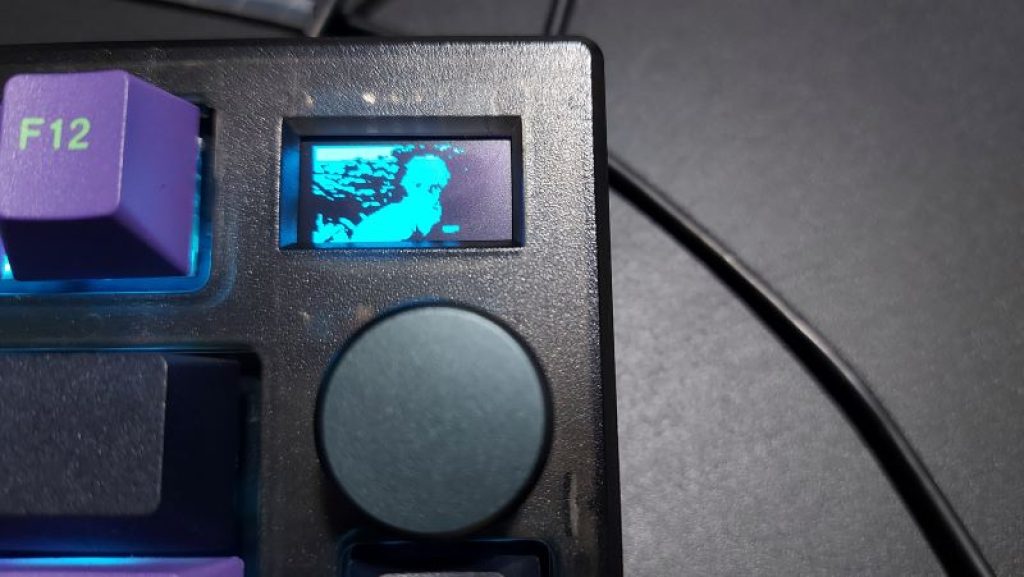
The MAXFIT81 comes with a wireless dongle 2.4GHz RF receiver that is slotted below the chassis. The switch there only controls the wired and Bluetooth connections. To be able to use RF, you will need to read the manual and find the function key combination to switch to RF mode. It would’ve been better to include the RF mode switch on the chassis just to make things much more accessible.
Conclusion
Fantech MAXFIT81 is a barebones keyboard is a great introduction for those looking to try out building their own gaming keyboard by letting them choose the keyboard color, and separately purchase switches and keycaps for their liking without binding them to a type of switch and a fixed set of keycaps.
Structure wise, while there’s some flex with the shell (due to the semi-transparent plastic shell material), it still keeps most of the rigidity due to its very rigid core of PCB, foam and plate sandwich. Overall, the DIY friendliness of the keyboard makes it user maintainable almost without the need for screwdrivers (except for some parts that will definitely need them) with snap-on shell and easy user replaceable battery pack. The included OLED screen is helpful in providing PC status, but for a 1″ screen size and low resolution, those looking for a pretty screen should look somewhere else.
The MAXFIT81 offers three modes of connectivity, but Fantech should have at least made it easier for end users to have a three-mode switch for the connection interface to make things simpler than using a FN key command to activate RF connectivity.
And finally, at around Php 4,000 retail, it doesn’t hurt the wallet much as we have a 75% layout keyboard with three-way connection, integrated volume knob and an OLED screen that provides some status display that’s a lot more different than the usual LED light indicators from most keyboards. If you’re not that picky with the screen and connection





